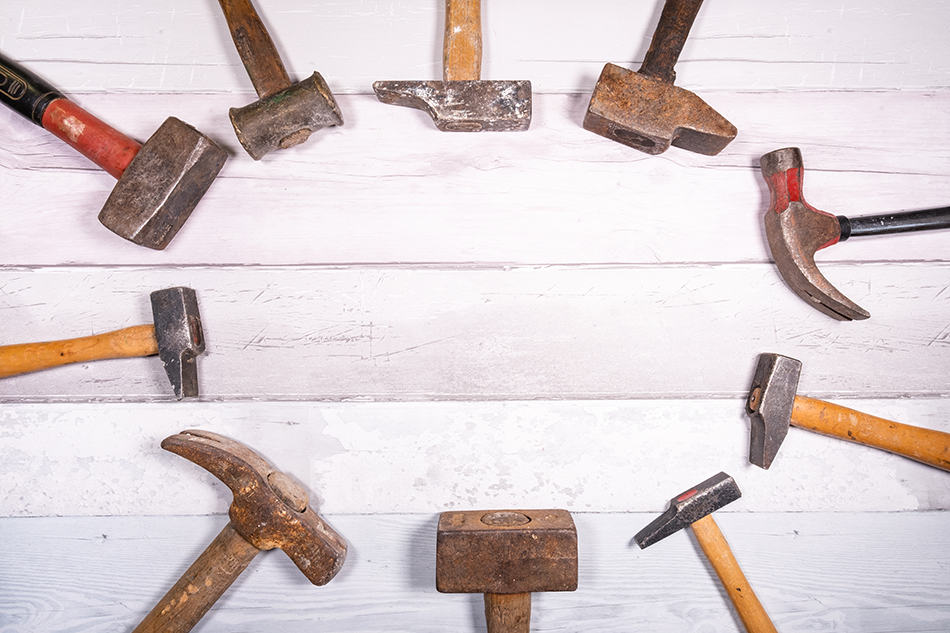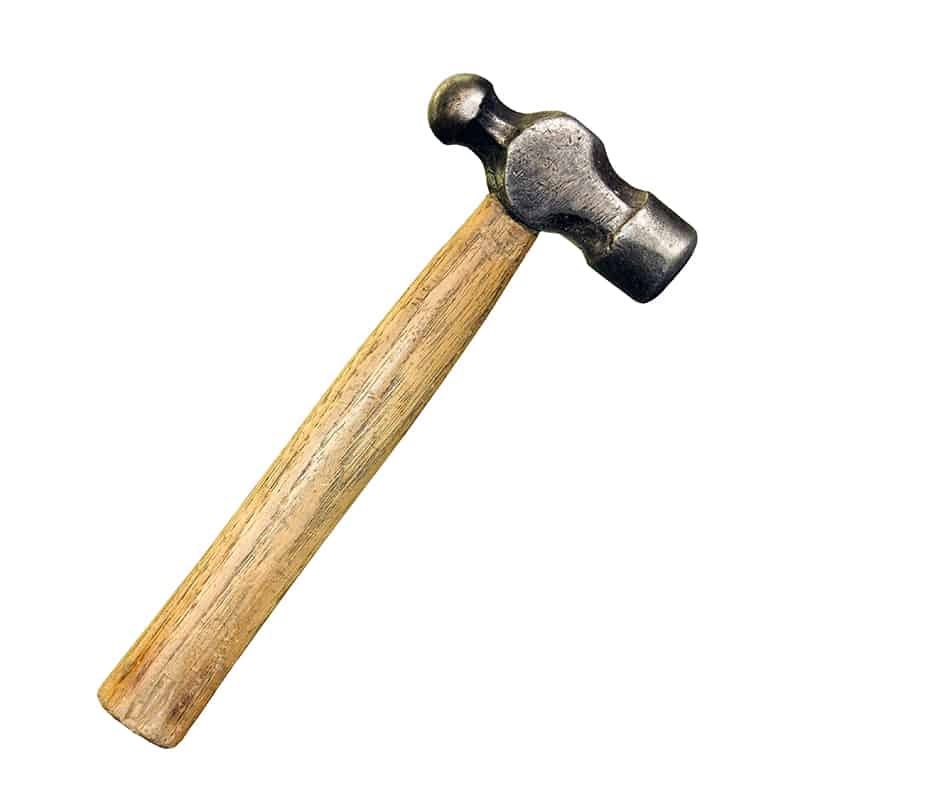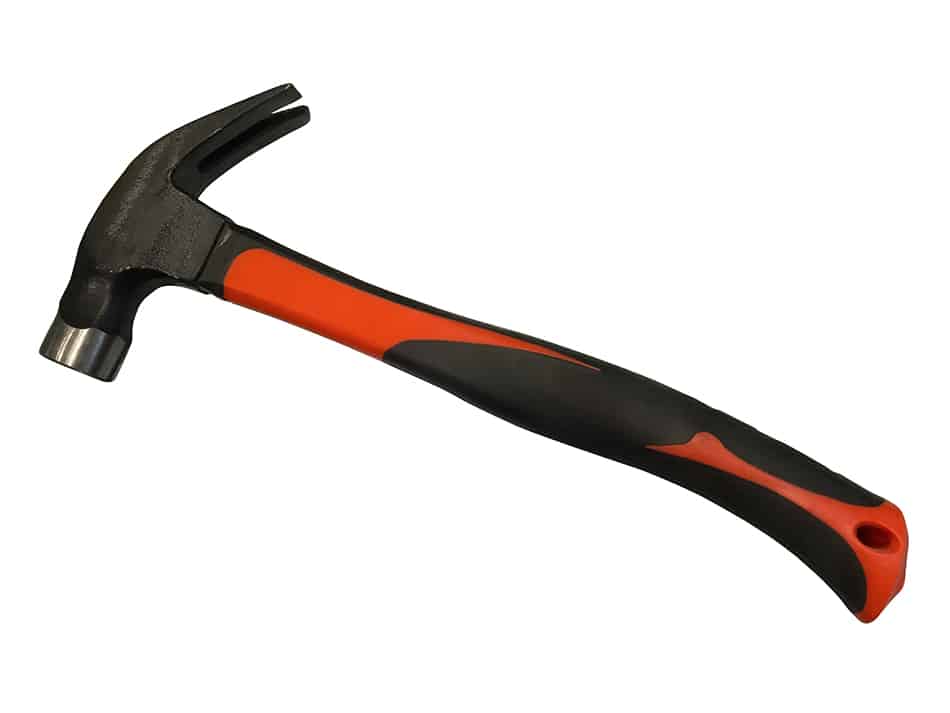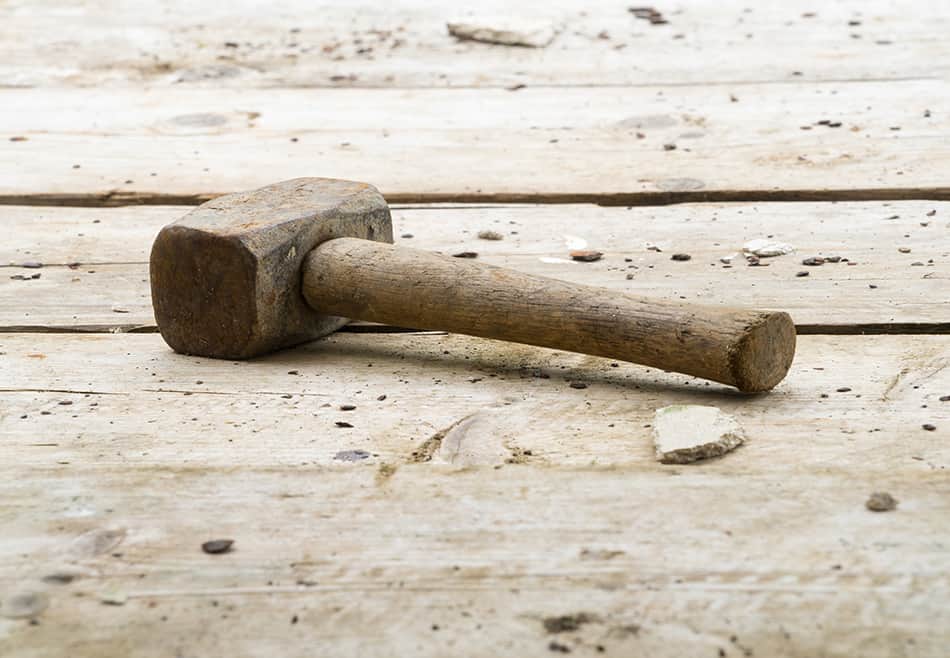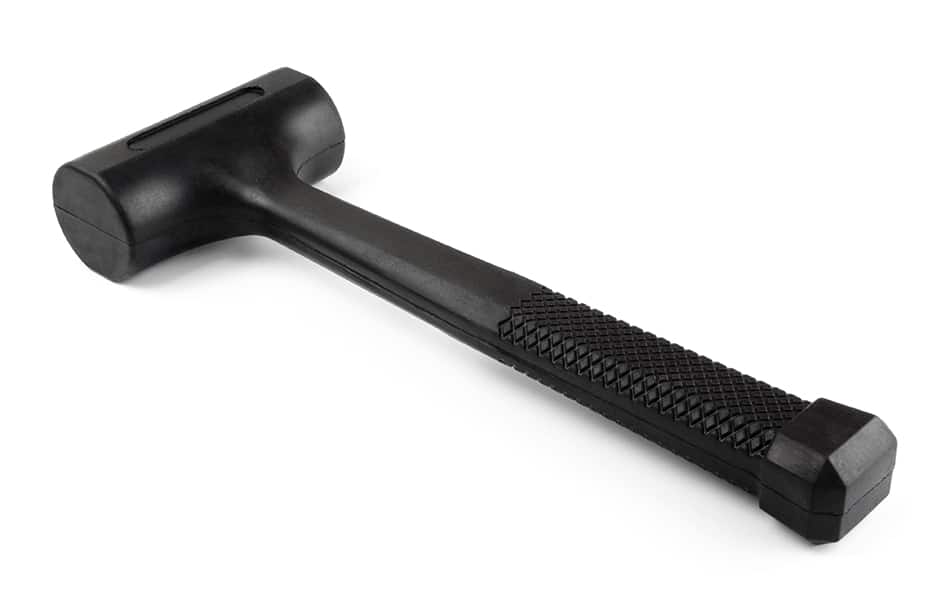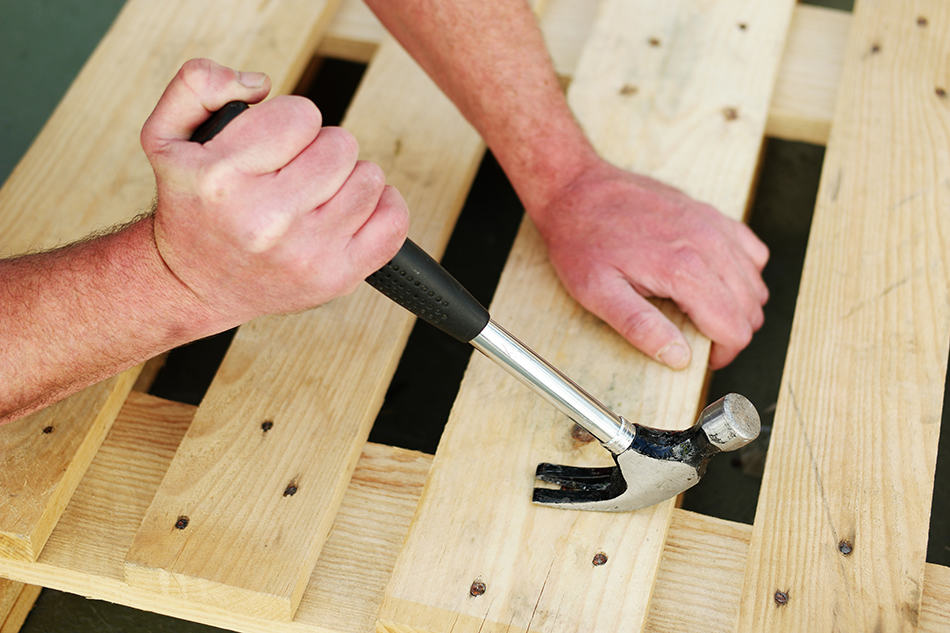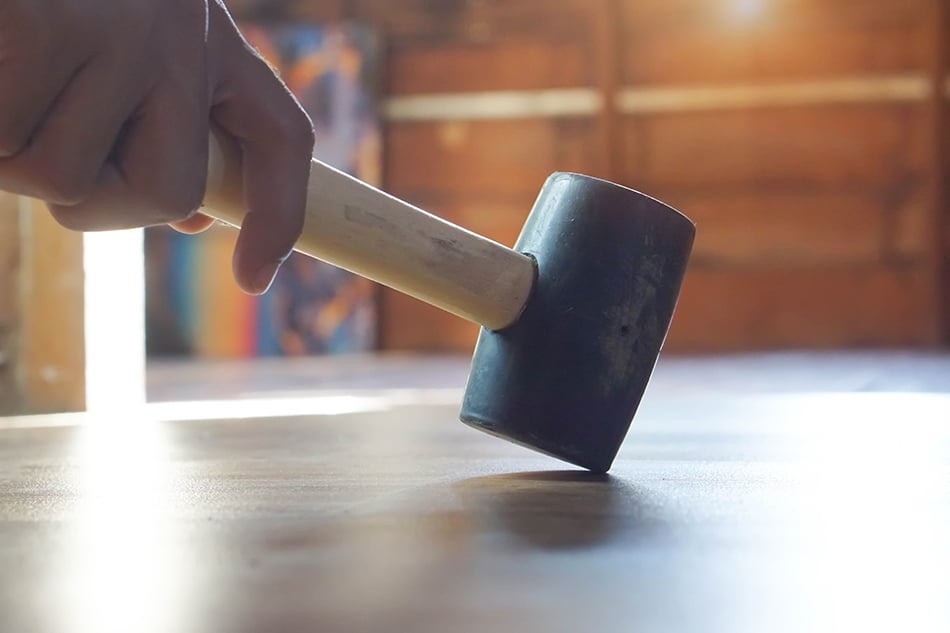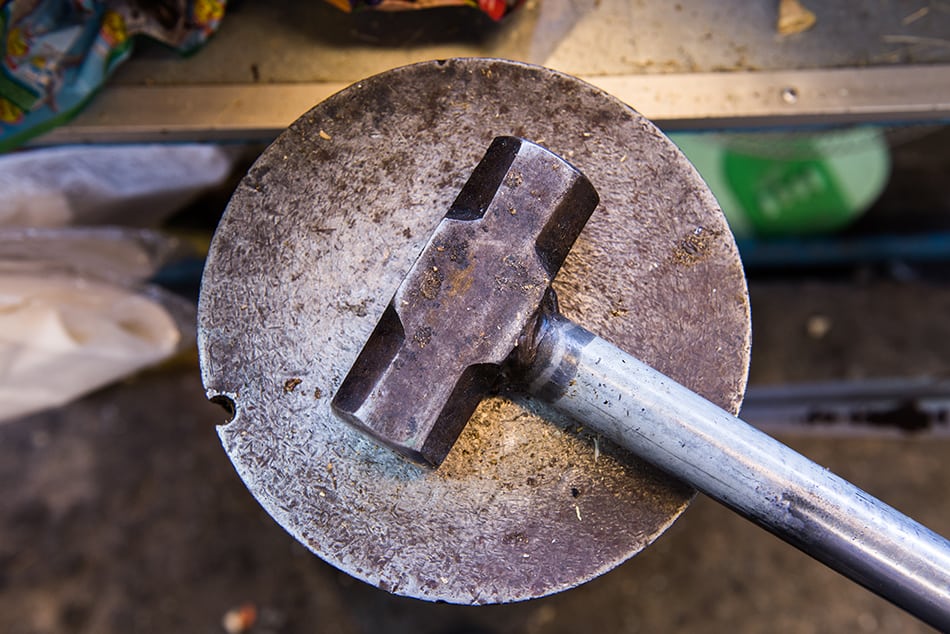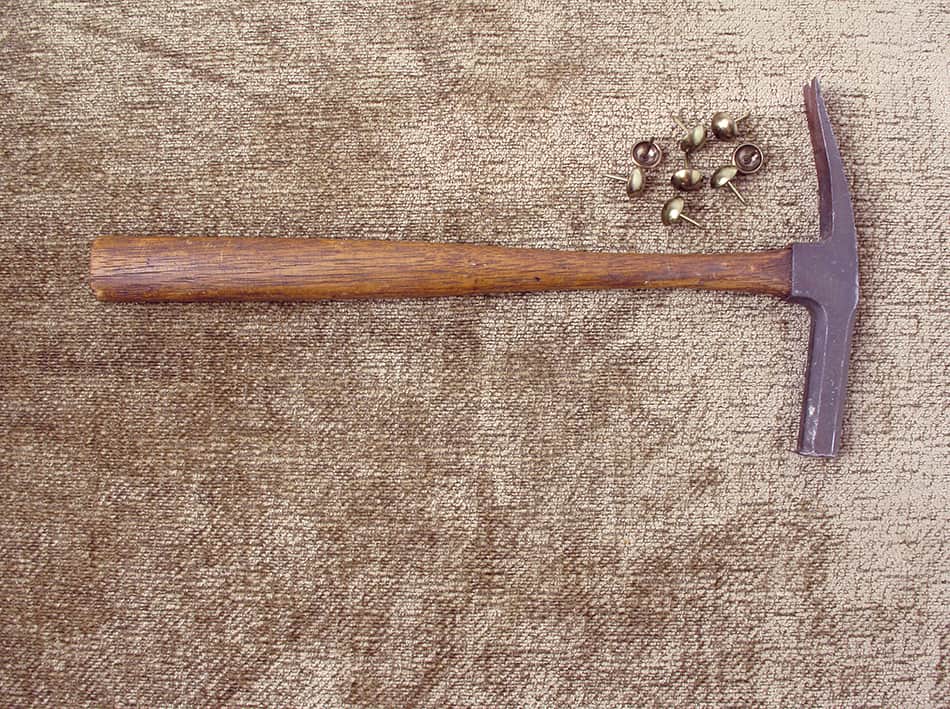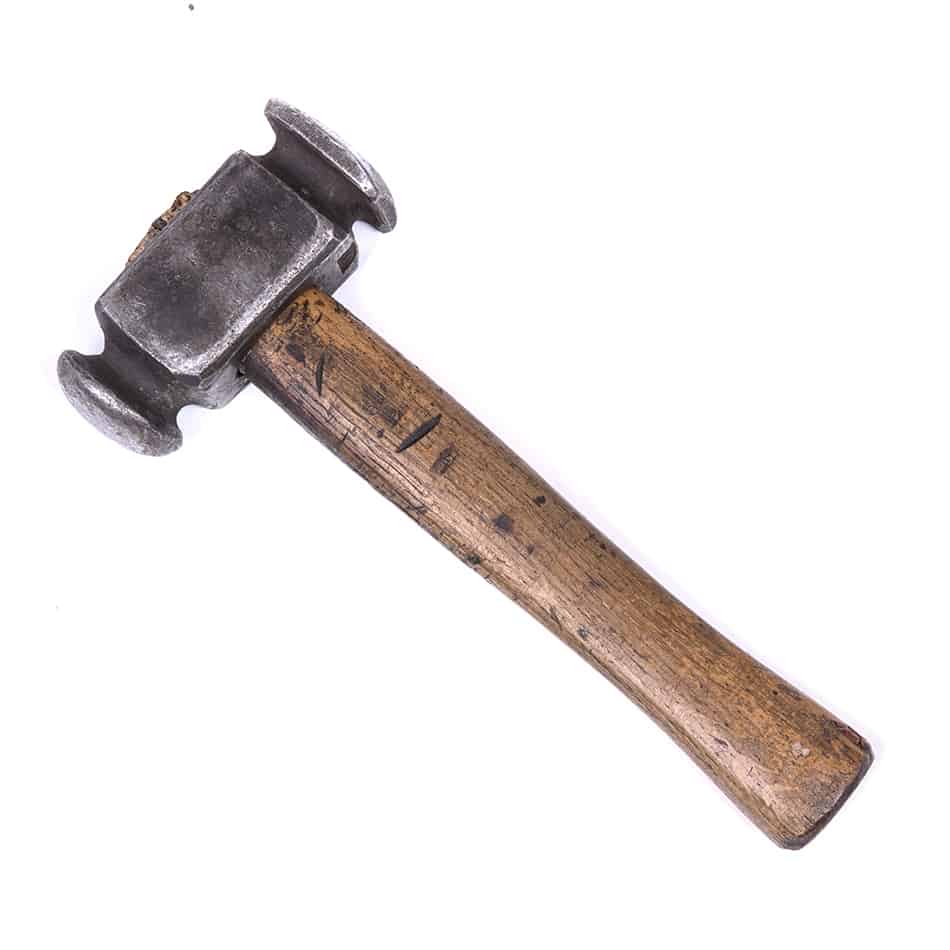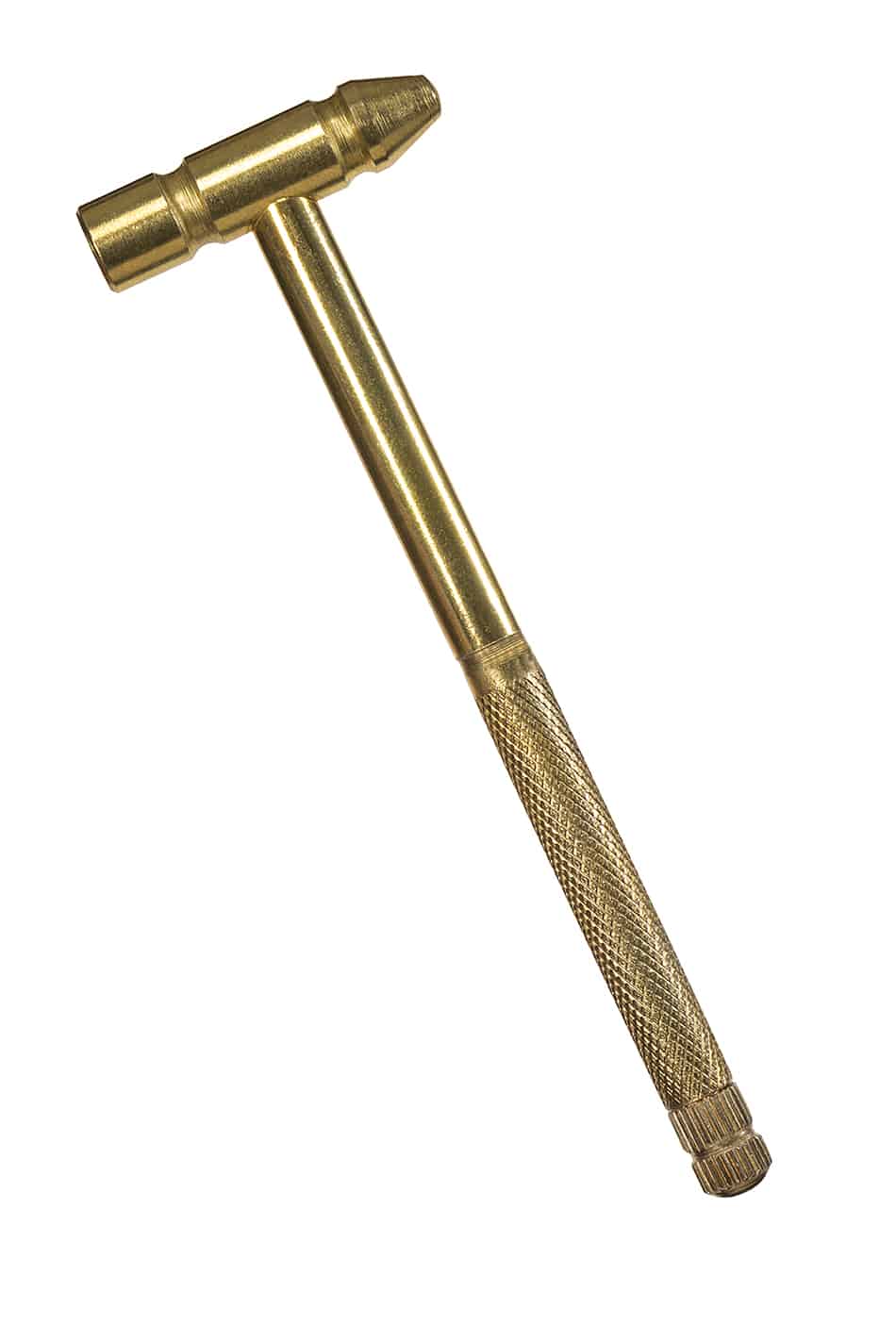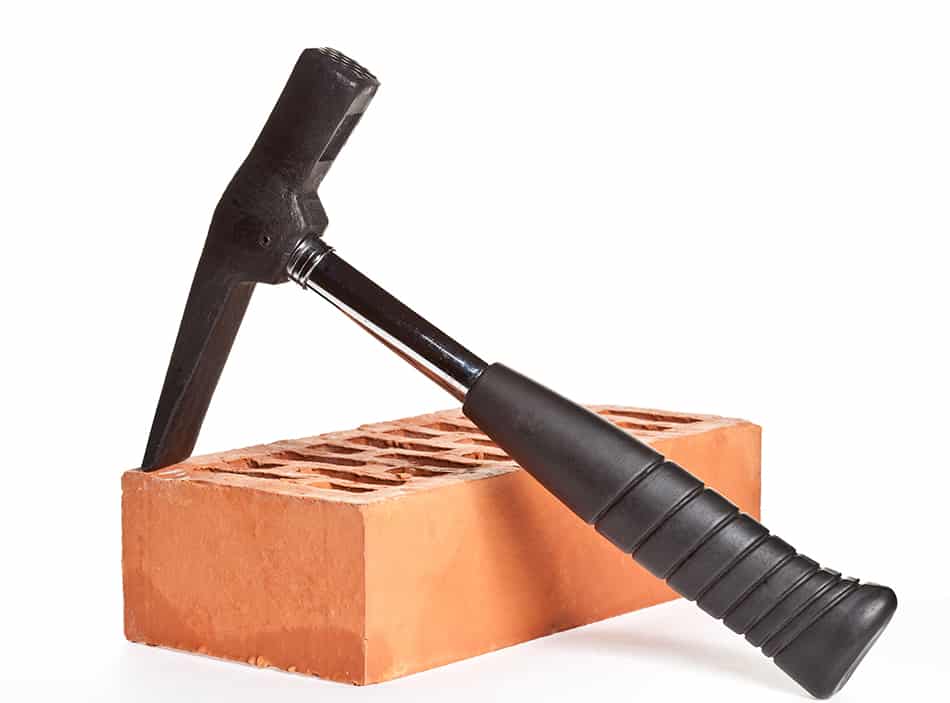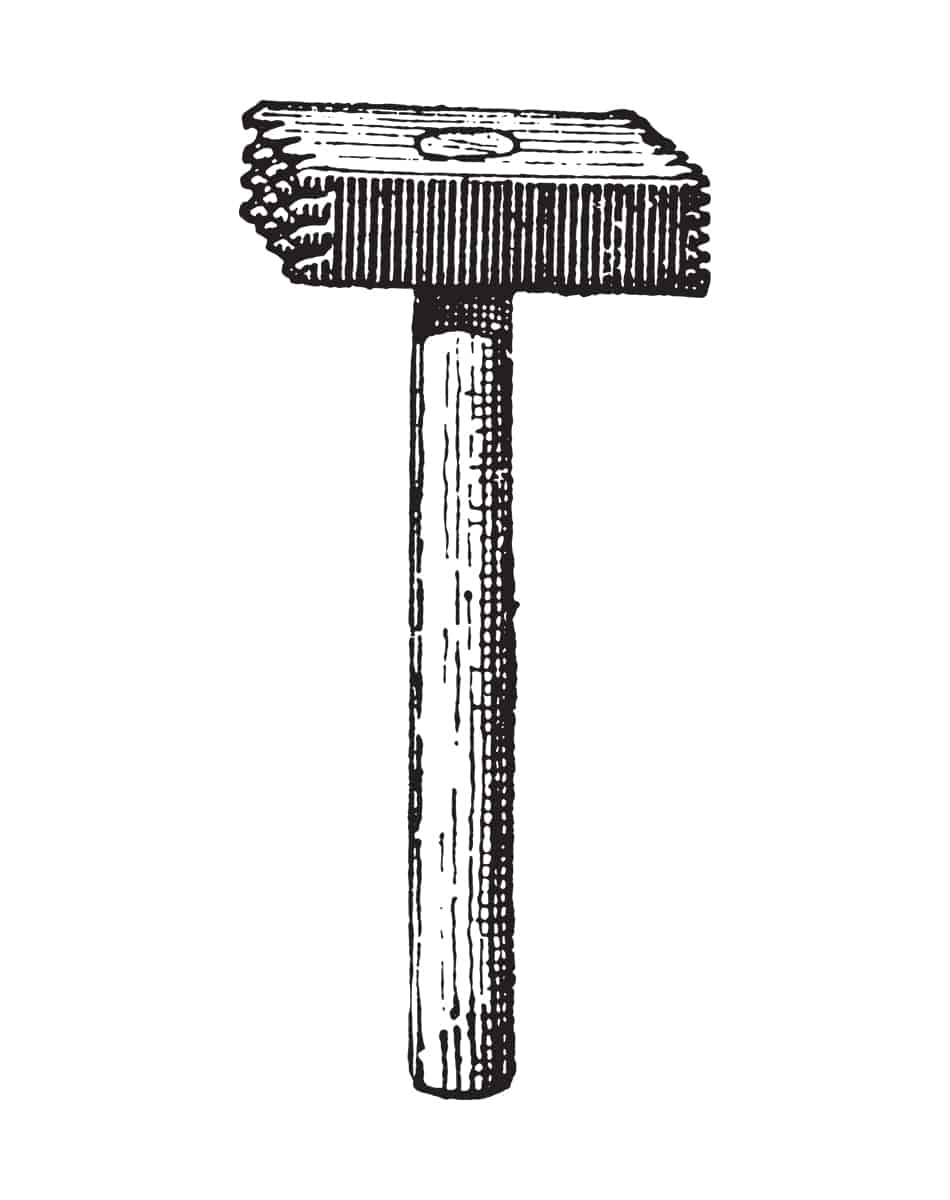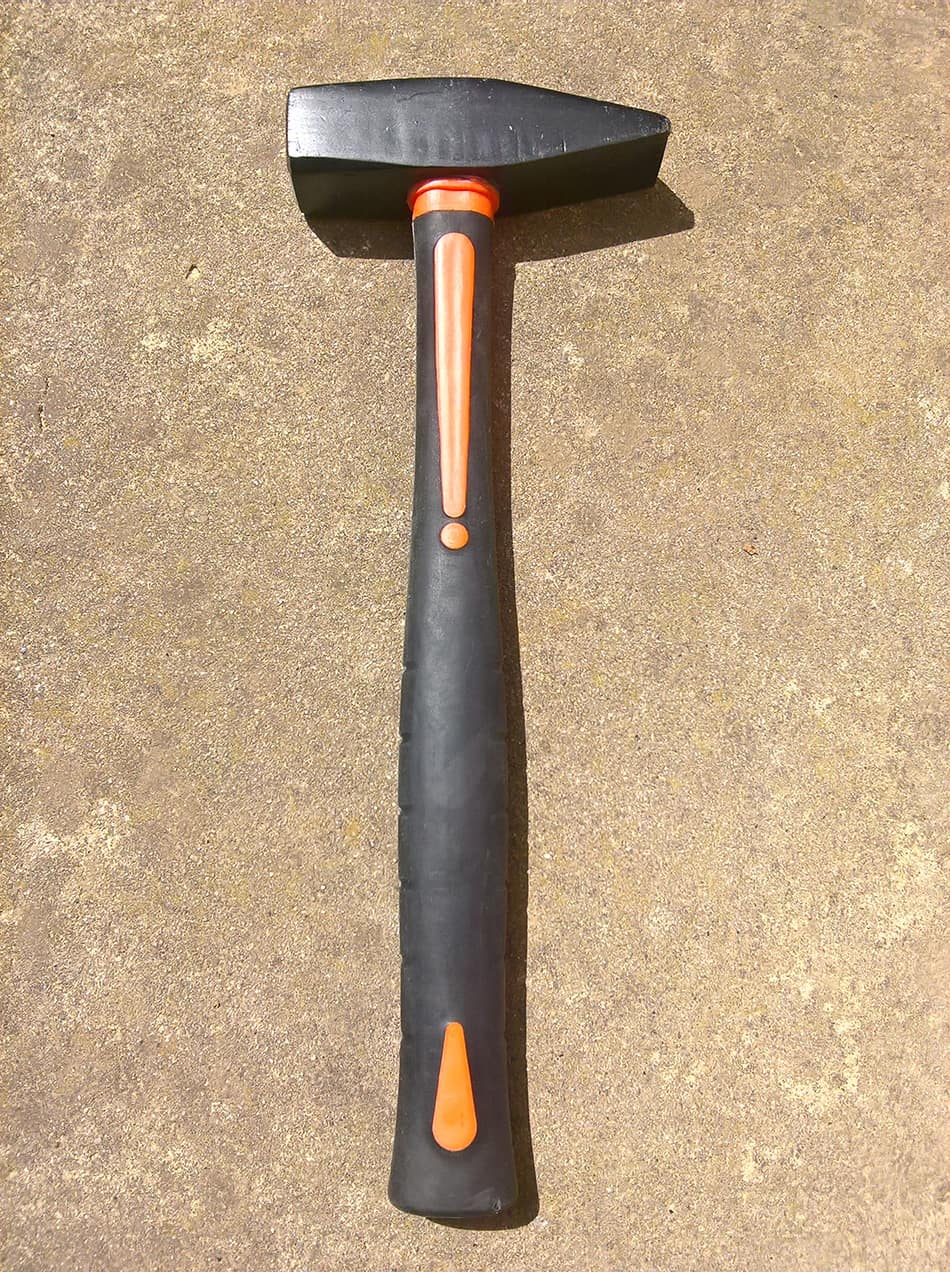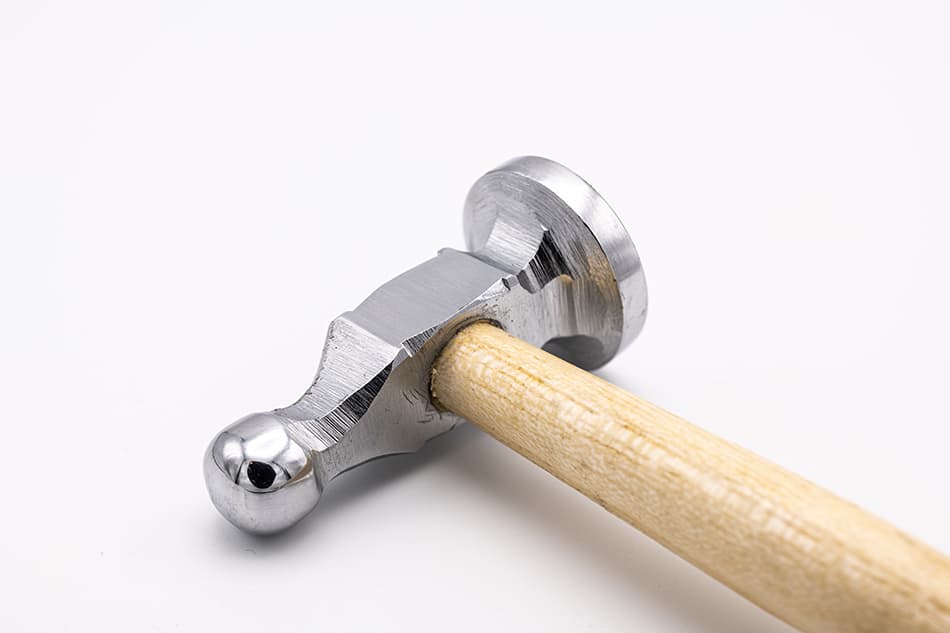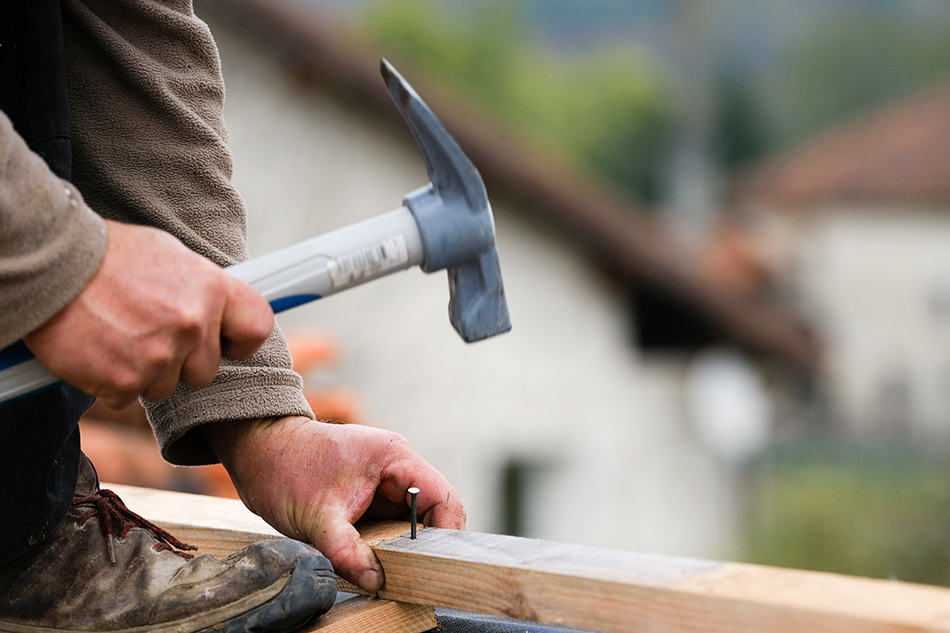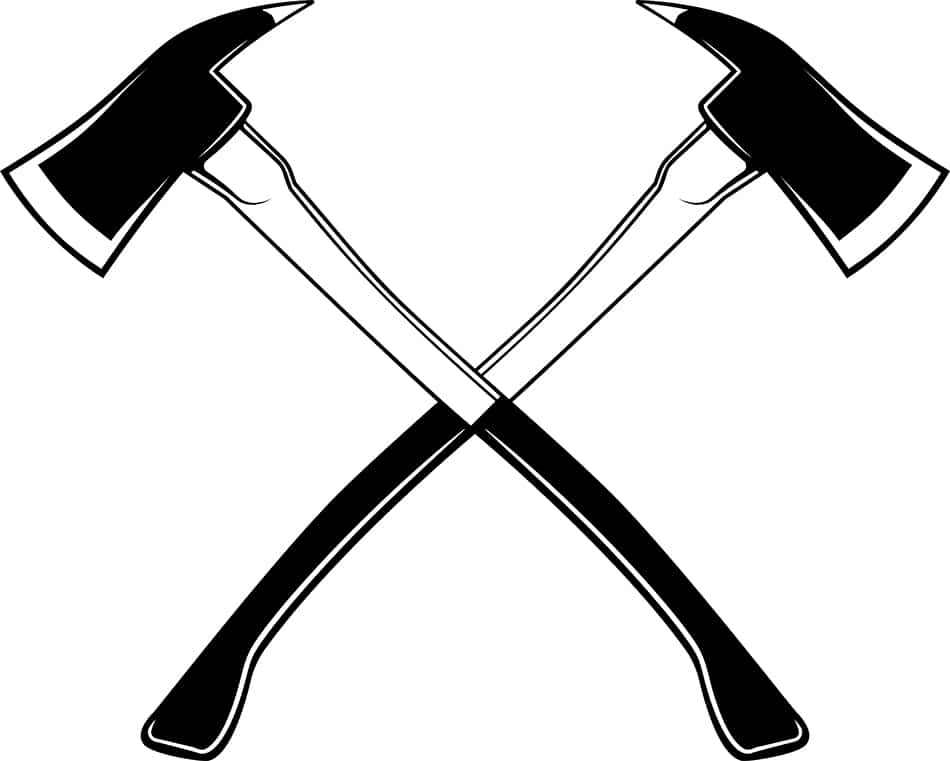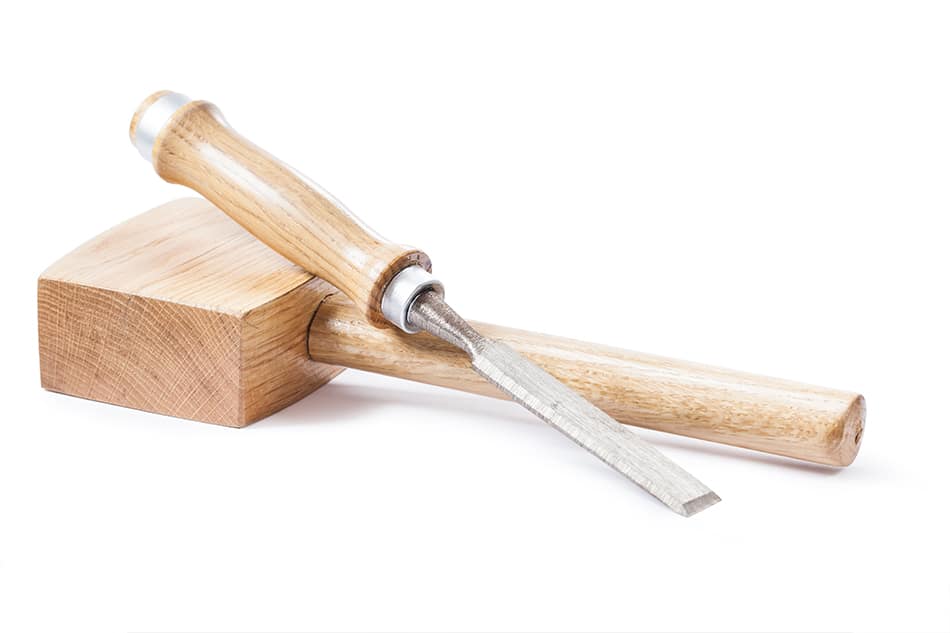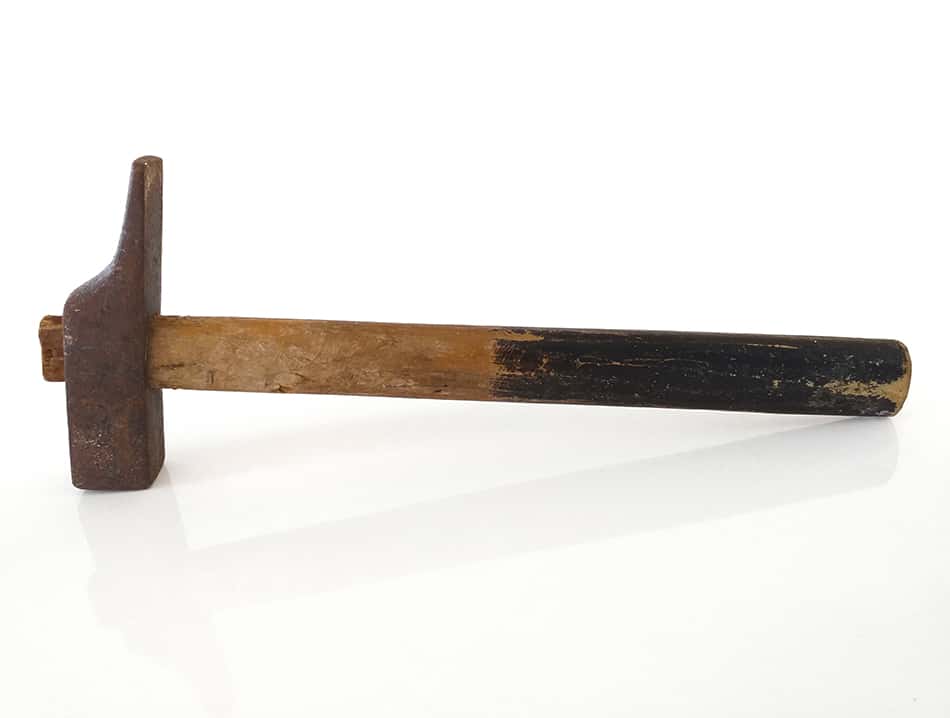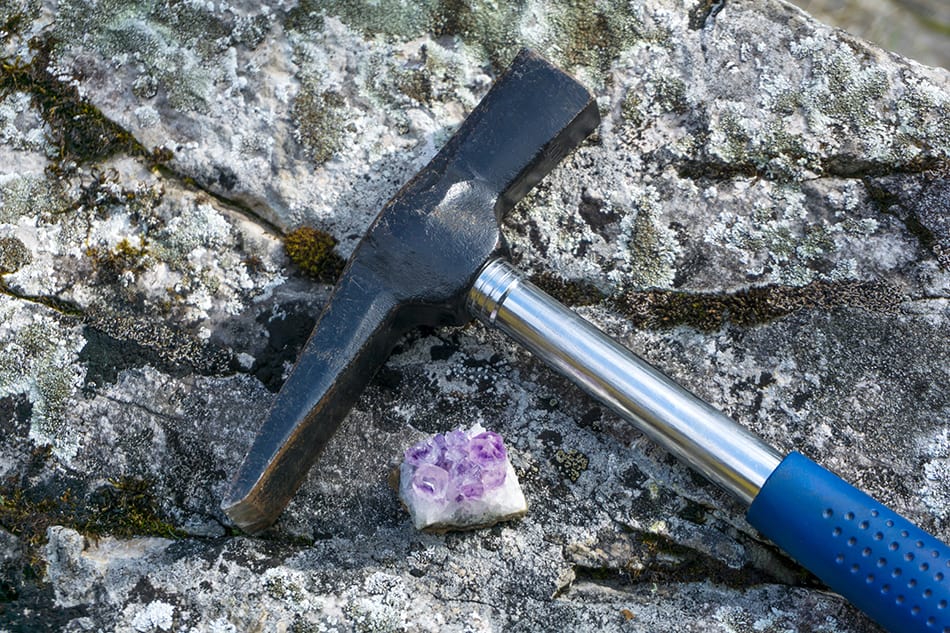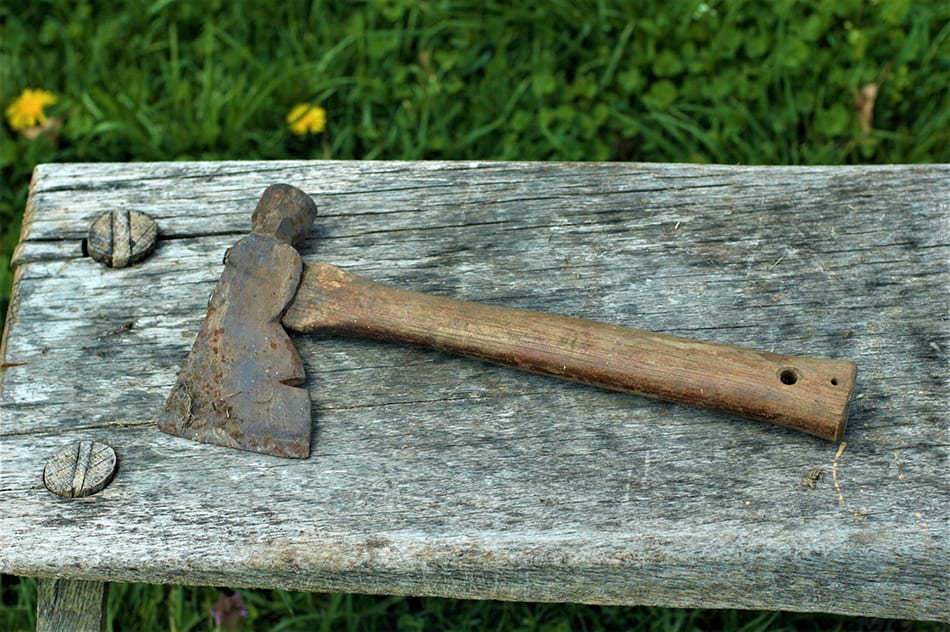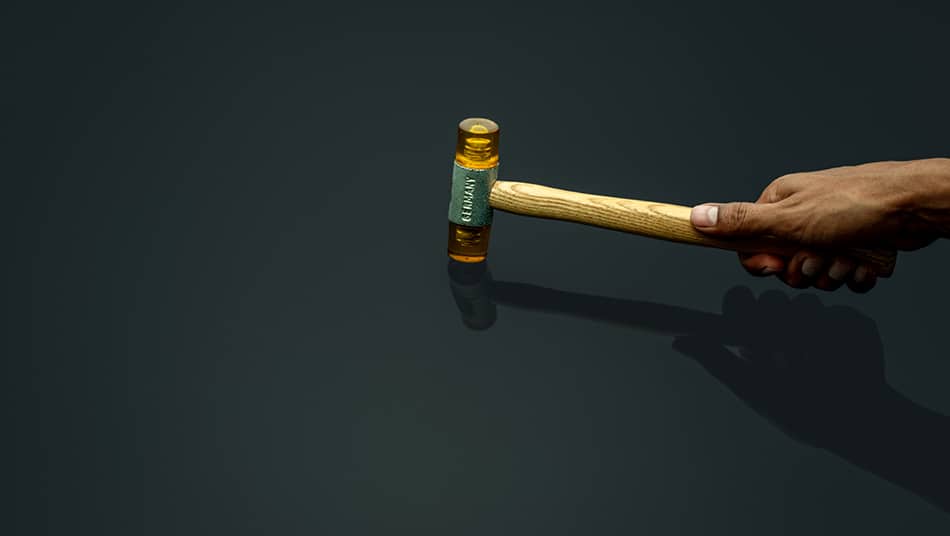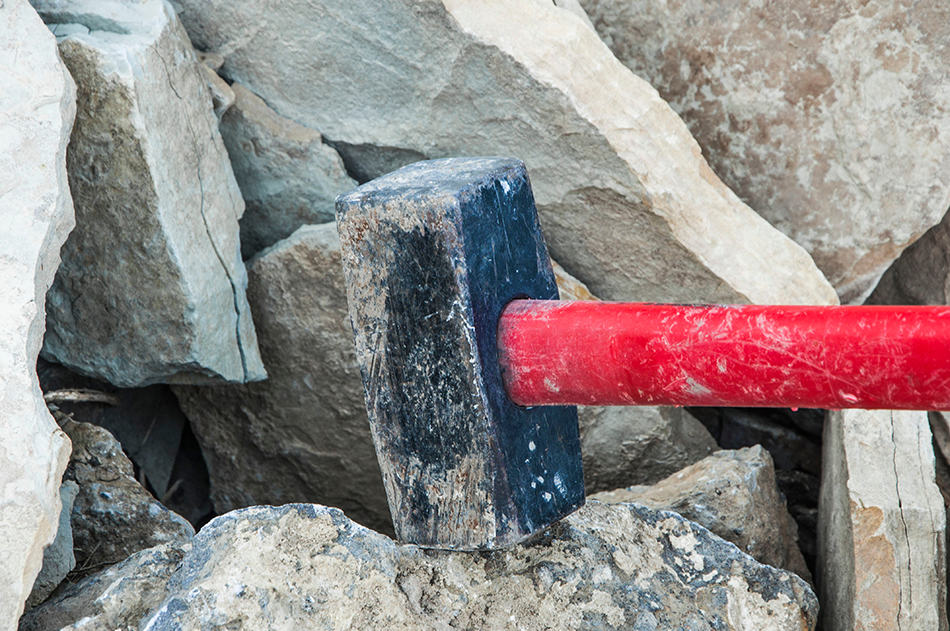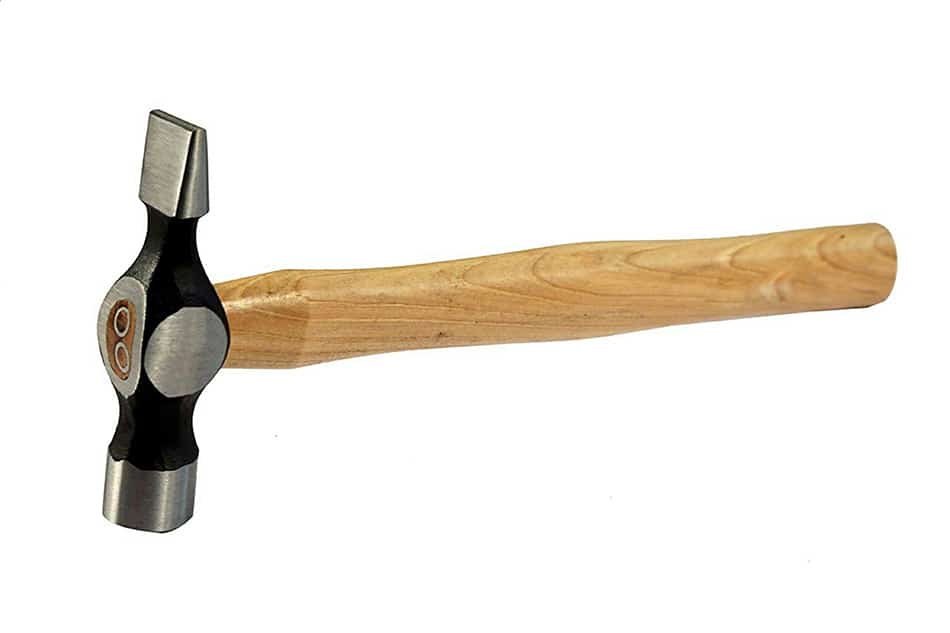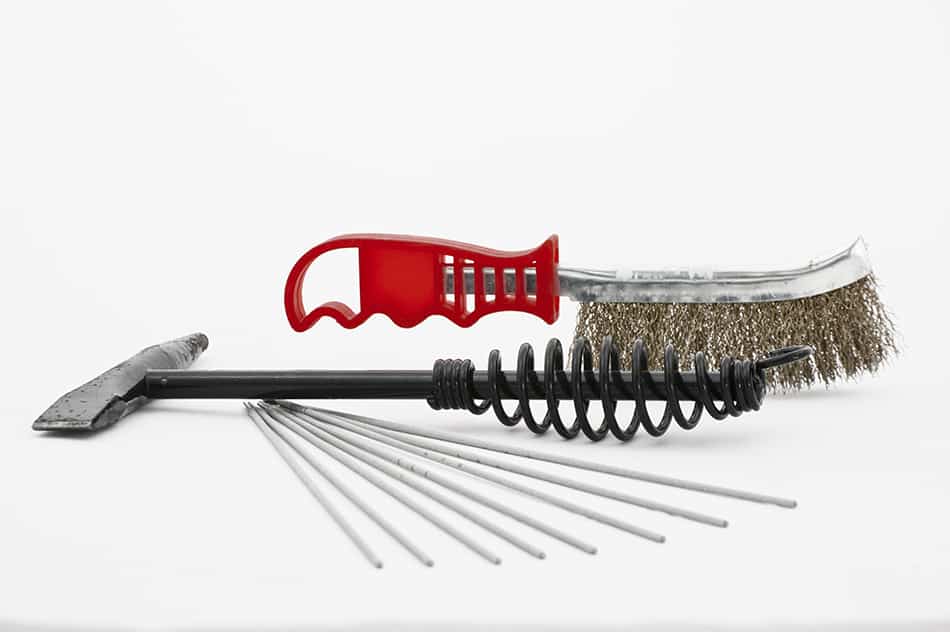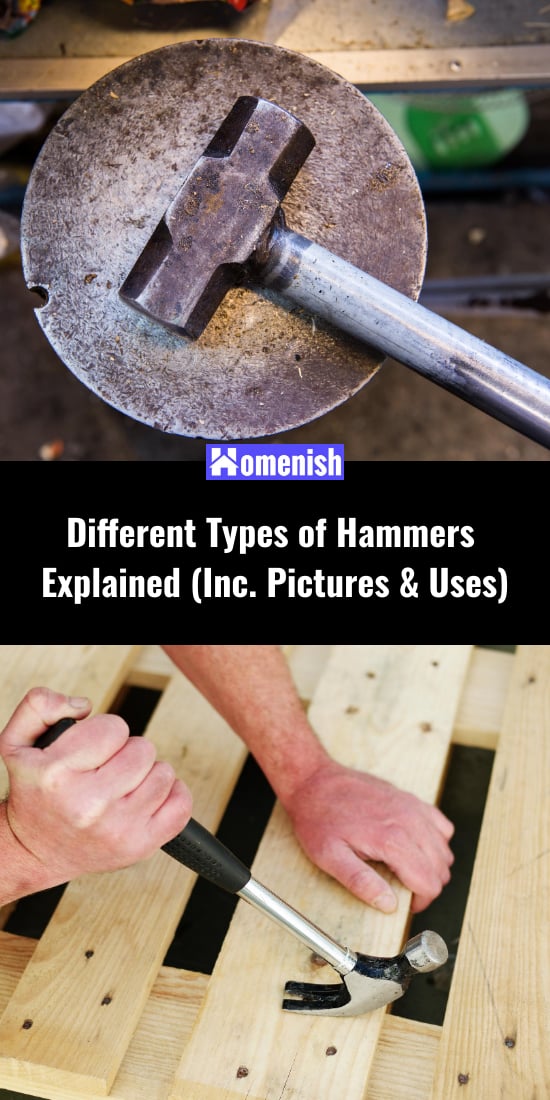When we think of tools in general, one of the first names that pop up in our heads is a hammer. It is one of the oldest tools with a variety of roles, even beyond their work at simple constructions. Since the hammers have varying roles in varying places, there are many kinds available in the market.
Some hammers are highly specialized to perform specific functions, while other hammers are suitable for general purposes. Other types are also available that are more versatile and used in different ways, and these have a spot in any workshop.
Table of Contents
- Parts of a Hammer
- What Type of Hammer to Buy?
- Common Hammers
- Specialty Hammers
- Blacksmith Hammer
- Blocking Hammer
- Brass Hammer
- Brick Hammer
- Bushing Hammer
- Cross Peen Hammer
- Cross Pein Pin Hammer
- Chasing Hammer
- Drywall Hammer
- Electrician’s Hammer
- Engineering Hammer
- Hatchet Hammer
- Joiner’s Mallet
- Lineman’s Hammer
- Mechanic’s Hammer
- Nail Gun
- Piton Hammer
- Planishing Hammer
- Power Hammer
- Rip Hammer
- Rock Hammer
- Scaling Hammer
- Scutch Hammer
- Shingle Hammer
- Soft-Faced hammer
- Spike Maul Hammer
- Stone Sledgehammer
- Straight Peen Hammer
- Tinner’s Hammer
- Toolmaker’s Hammer
- Trim Hammer
- Welding Hammer
- Safety Advice for Using a Hammer
- 1. Always hit the surface using the head of the hammer and not the sides.
- 2. Wear goggles for most of the time.
- 3. Maintain your hammer.
- 4. Make sure the head is attached correctly and is in its place with the handle.
- 5. Use a scrap of wood to prevent blow marks.
- 6. Always make sure to use the right kind of hammer for the job.
Parts of a Hammer
Head
A hammer mainly consists of three parts. The first and the most prominent feature of a hammer is the head. The head not only includes the portion with which you hit the things, but it also has the part that is affixed over the handle and acts as a fulcrum. This part also helps in pulling out nails with a claw hammer.
Handle
The next part of the hammer is the least varied in all, and it is the handle. The handle may vary in thickness and a little bit in shape. Its main job is to provide support, precision, and a swing to the hammer.
Back
And lastly, it is the back part of a hammer. This part may consist of a hook, claw, or pein/peen.
What Type of Hammer to Buy?
Hammers are available in varying shapes, designs, sizes, and weights. Significantly different hammers have specific usages, but a normal DIY-er would only need one or two types of a hammer.
Over the years, the design and shape of a hammer haven’t been affected much. Now, instead of only a useable head, the handle has also been made useable. Initially, the handle was made of wood and attached through a hole; this allowed easy replacement.
Hammers are now made of better materials, and the handles are molded into a head. Hammers these days are also formed with a built-in shock absorber to make them easier to use.
With so many options, it is difficult to decide which hammer will serve your purpose and which hammer has all the features you are looking for. Here is a guide to the various kinds of hammers and their use. From traditional to the most functional designs, if one had to separate hammers into two major types, that would be common hammers and specialty hammers.
Common Hammers
The chances are that you have used these hammers or have seen or heard their names. These hammers are used most commonly and can be found in any workshop. A full set of these hammers will allow you to do almost any task. Here is a list of all common hammers and their uses.
Ball Peen Hammer
Also commonly known by the name of machinist’s hammer, engineers typically use this one. The pein/peen of this hammer has a round shape. This hammer helps to round the edges of metal fasteners, pins, shaping metal, closing rivets, etc.
People popularly use this hammer in the fabrication method termed “peening.” The hammer’s peen holds a significant job, which is why it gets the name ball-peen hammer.
Claw Hammer
This hammer is undoubtedly the most recognizable hammer of all. Its highlight is the back part. The back of the hammer features a forked and curved claw. The user can easily lever out nails from any surfaces using the clawed back. Other than the clawed back, the hammer is versatile and finds a place at any workshop or home.
Club Hammer
Club hammer or lump hammer or drilling hammer is a short hammer with a double-faced head. The head is very similar to that of a sledgehammer. This hammer is not for commercial use. Club hammer is suitable for driving masonry heads and steel chisels. Except these, club hammers are also useful for small demolition works.
Dead Blow Hammer
The highlight of this hammer, too, is its head. The head is designed especially for soft blows and minimal recoil. The head is either made out of plastic or solid rubber. Often, the head is even semi-hollow, filled with lead shot or sand.
This hammer can be used for almost anything from woodwork to automotive. This hammer can be used for fixing dents, displacing parts, and knocking wood apart or together without disfiguring the surfaces.
Framing Hammer
The framing hammer closely resembles the claw hammer. But instead of a clawed head, this has a waffled head with a straight claw. It gets the name framing from its primary function, which is to assemble the house frames.
The waffled head of the hammers prevents the driving nails from slipping.
Rubber Mallet
The rubber mallet is the most common type of mallet. The rubber head promotes softer blows. The rubber mallet is so gentle that it can force the plasterboard into its place without damaging it. You can further use it in upholstery, woodwork, and metal sheets.
Sledge Hammer
The sledgehammer has a long handle and, similar to a mallet, has a double head. But the sledgehammer is designed for large and heavy blows. This hammer is a popular demolition tool as it can be used for breaking up masonry and concrete or driving stakes.
Tack Hammer
Also known as an upholstery hammer, this one is an unusual hammer. It features a claw-like two long heads with one magnetized. It is designed to place a tack using the magnetic head and then drive the tack using the head’s non-magnet part.
Specialty Hammers
These hammers are suitable for specific tasks. You will rarely find these hammers and likely even haven’t heard some of these names. Most of these hammers are not commonly found in general hardware stores. Some of these hammers may resemble the common hammers but differ in weight, shape, size, etc. Let’s take a look at all the specialty hammers.
Blacksmith Hammer
Some of you may have heard this name from those popular fantasy games. It is a type of sledgehammer. In this hammer, one of the heads is round and slightly tapered. This hammer helps to shape red-hot steel.
Blocking Hammer
The blocking hammer has a square and flat head on one side and a cylindrical one on the other side. The blacksmiths mostly use this hammer. The blocking hammer helps to shape metal on an anvil or a block.
Brass Hammer
The brass hammer helps to pound steel pins. This hammer is preferred for this task because it doesn’t damage the surrounding surface. The hammer is cylindrical, thin, and double-headed. You can spot this hammer at woodworking shops as well as automotive.
Brick Hammer
This hammer is also famously known as the masonry hammer. The claw of a brick hammer is very thick, while the head is so narrow that it can split bricks. And hence the brick is commonly used in masonry projects and bricklaying.
Bushing Hammer
The bushing hammer very much looks like a meat tenderizer. It has an extended head, and it helps to roughen up the texture of a stone to make less slippery stone walkways or for aesthetic purposes.
Cross Peen Hammer
The hammer has a wedge-like peen/pein that is horizontally aligned. It helps to easily panel tacks and pinks without you having to worry about hurting your fingers. The hammer also helps to shape metals.
Cross Pein Pin Hammer
This is a simpler variation of the cross-pein hammer. This hammer is used mostly for light joinery work, cabinets, and other woodwork. The cross pein pin hammer is not suitable for metalwork.
Chasing Hammer
The chasing hammer has a very unusual shape. It has a rounded head, bulbous handle, and a round and small pein. Jewelers use this hammer to shape jewelry metal.
Drywall Hammer
The drywall hammer looks a lot like a hatchet, but with a notch at the bottom. The hammer has a straight peen and a specialized ending. The notch at the bottom helps to hold nails in their place. The hammer doesn’t damage the drywall paper while holding nails, and the pein’s blade removes the excess bits from the drywall safely.
Electrician’s Hammer
This hammer is a variation of the claw hammer. This has an extended neck. The extended neck allows the electricians to find the nails that are hard to reach.
Engineering Hammer
The engineering hammer was initially used at locomotives. They feature a cross peen and a round head. The term engineering hammer is also associated with hammers with heavier ball peens and double-rounded heads.
Hatchet Hammer
The hatchet hammer is one of the more unusual hammers. Many times, this hammer is also called the half-hatchet. This hammer doesn’t have a pen but instead has an ax blade. This blade is a part of the emergency toolkit and is well-suited for survival purposes.
Joiner’s Mallet
Being a traditional mallet, the head of the joiner’s mallet is made of a tapered, solid wood block instead of a metal block. This hammer is used when you don’t want to mar on the surface. It is used for gently tapping wood together and for driving chisels.
Lineman’s Hammer
This hammer’s highlight is its solid head and a conical peen. This hammer is used for working on telephone poles. The hammer is explicitly designed for hammering bolts and driving log screws.
Mechanic’s Hammer
The hammer features a long peen with a conical die and a flat head. This hammer is also termed as the body mechanic’s hammer. The hammer is mostly used with a curved anvil known as a dolly to remove dents from a car.
Nail Gun
This may not be considered a hammer technically, but it does the same job as framing or claw hammer. It is commonly referred to as a nailer. This drives a nail into surfaces like wood and others using compressed air. Other less common versions like battery-powered and cordless versions of are also available in the market. This tool is widely used in DIY projects and basic construction. The tool is used where a good number of nails have to be driven.
Piton Hammer
It is called the piton hammer because the peen of it has a hole that is used to remove pitons. The hammer is also known as the rock-climbing hammer. The head’s weight can vary from being heavier or lighter, depending on whether it is meant for rock climbing or not.
The hammer with a heavier head can drive in easily without much effort. The lighter hammer is used to reduce weight while driving fewer pitons. Some of the hammers allow the interchanging of heads to increase their range of use.
Planishing Hammer
The planishing hammers have a convex head. The peen of the hammer is tipped with a cylindrical die. The hammer helps to smooth a metal piece over a planishing stake. This allows the metal to take the shape of the stake. It is also used for fine shaping.
Power Hammer
The power hammer uses the process of compressed air to move large and heavy pistons up and down to shape and hammer the material under it. It works pretty much in the same manner as a hydraulic press does. But this easily moves the piston around a couple of hundred times within a minute. The hammer helps to forge steel into various shapes.
Rip Hammer
This hammer is a more professional version of a claw hammer. This has a straight and a heavier claw instead of a curved one. It gets the name as it is used to rip apart construction materials and is also used for demolition. Contractors use this hammer as it has a variety of purposes, from measuring outlet boxes to digging holes and anything in between.
Rock Hammer
This hammer is a small tool, and either has a pick on the back of a chisel. It has a little head and is used most commonly in historical excavation and geology. They are commonly known as pick hammers. The chisel helps in tasks like removing vegetation, splitting soft rocks, creating small holes, etc.
The other variant which has a pick is usually called the geologist’s pick. It helps to split harder stones. The hammer is often used to break the old brickwork and joints.
Scaling Hammer
The scaling hammer, instead of a normal head, features a vertical pick and chisel. The hammer helps to remove rust, scales, and other types of hard coatings from surfaces like boilers, etc. Different pneumatic versions that range from single to triple-head are available, and their functions are like that of a jackhammer.
Scutch Hammer
The hammer gets its name from the process of scutching. It is the process where the old mortar is removed from paving and bricks. This hammer either comes with one head and a slotted scutch holder or two scutch holders. When the scutch hammer holds the combs, it functions like droves or toothed chisels. That is used for different jobs depending on the user and the number of scutching attachments.
Shingle Hammer
This hammer features a square head, small claw, and a spike. The small claw is used to pull out nails. The spike is used to put the nail holes in shingles and slate. This work is often too fragile, which is why this hammer is preferred for this task.
Soft-Faced hammer
The hammed has a round and a double-face. The face is often made of either copper, plastic, or rubber. Sometimes the hammer even comes with interchangeable faces.
Spike Maul Hammer
The hammer features a long handle and is generally used for driving spikes from the railroad to the opposite side of the tracks. It has two heads that are thin and long. The hammer, more commonly, is asymmetrical, with one head being longer and the other thinner. The standard version of this hammer has tapered and squared ends. The bell version has cylindrical heads.
Stone Sledgehammer
This hammer is also known as the mason’s variant. It is designed specifically for breaking up concrete and stones. The hammer doesn’t have a double-head. Instead, it has a prominent oval face with a pein that is short. This is used to make score lines.
Straight Peen Hammer
This hammer is pretty much the same as the cross-peen hammer. The only difference is that in this hammer, the peen is vertically aligned. The hammer is mostly used for shaping metal.
Tinner’s Hammer
The tinner’s hammers have a cross and sharp pein with a square head. They are commonly used in settling rolled edges and completing seams in metalwork.
Toolmaker’s Hammer
This is the most unusual-looking hammer on this list. This hammer has a rounded head and a ball pein. The hammer also has a magnifying glass located in the central portion of the hammer. It is used for delicate and precise works in a machine shop.
Trim Hammer
These hammers feature a straight claw. These claws are smaller than the normal claw hammers. The face of these hammers is smooth and used for diving nails without damaging the surrounding surface area. The hammer is also known as the finishing hammer.
Welding Hammer
This one is a peculiar hammer. It has a vertical peen on one end and a round chisel on the other end. This hammer is also referred to as a chipping hammer.
The handle of the hammer has a very unusual spiral design. It almost resembles a spring. The hammer is used to dissipate slags from welding points. It removes the beads that have cooled. The spring-like structure further helps to dissipate the heat.
Safety Advice for Using a Hammer
Hammers are generally used to hit surfaces, nails, etc., and therefore it is essential to make sure that the hammer strikes the right place without damaging the surrounding or hurting yourself. Fragments form after the hammer hits a place, so it is crucial to contain these fragments for safety.
In most cases, it is essential to protect the object’s surface that the hammer will be hitting to prevent it from damaging by the blow.
Here are a few tips you should keep in mind while working with a hammer:
1. Always hit the surface using the head of the hammer and not the sides.
The metal on the sides is not as hard as it is on the head, so that it may get damaged. This also creates an unbalance during the process, which does not give a clean hit. It not only affects the balance but also blocks your view, and you can’t see what you’re hitting.
2. Wear goggles for most of the time.
Goggles are essential, especially while driving nails and breaking concrete or other material, as that can lead to fragments on impact, and you would want your eyes protected.
3. Maintain your hammer.
If the head is attached to the hammer’s handle and they are two different parts, then the handle tends to get loose over a period of use. This means that while using the hammer, the head may slip down and hurt your hand or even fly off during a swing.
4. Make sure the head is attached correctly and is in its place with the handle.
Over several uses, the face of the hammer smoothens out. This allows the nails to slip off. You can use an abrasive paper to roughen out the face to prevent nails from slipping away.
5. Use a scrap of wood to prevent blow marks.
The hammer blow can leave blow marks, which a scrap of wood can easily absorb. Place the piece of wood on the surface you wish to work on instead of directly hitting the surface. When performing delicate woodwork, use a punch to sink the nails in without striking the surface.
6. Always make sure to use the right kind of hammer for the job.
It will make the job easier and prevent errors. This will also help you avoid damaging the surface, the hammer, or yourself.
